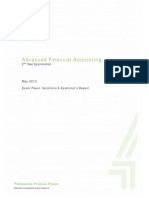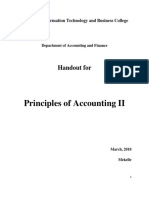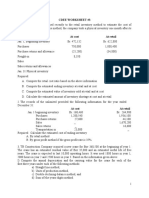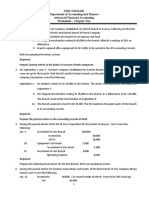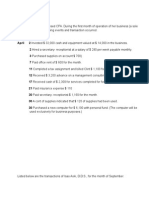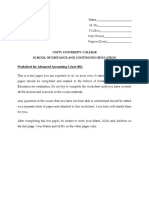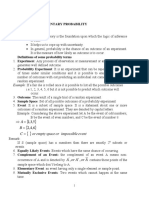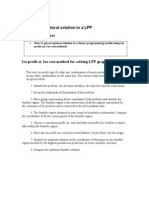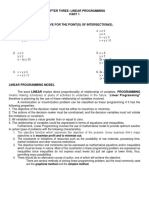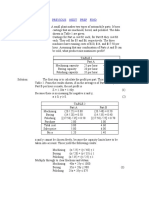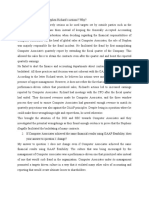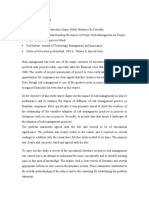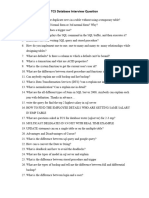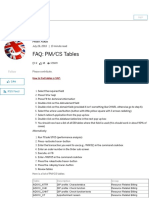0% found this document useful (0 votes)
615 views7 pagesOptimal Product Mix Strategy
The company manufactures products X and Y using machines A, B, and C. Each product requires different amounts of time on each machine. The goal is to determine the optimal mix of products to maximize profit.
A linear programming model is constructed with the objective of maximizing total profit based on units produced of each product. Graphs are drawn showing the feasible regions for each machine and combined based on their capacities.
The optimal solution is found by evaluating the objective function at the corners of the combined feasible region, determining the point that yields the highest profit is 1.6 units of X and 2.4 units of Y for a maximum profit of 24.80 Br.
Uploaded by
Beewketu YaregalCopyright
© © All Rights Reserved
We take content rights seriously. If you suspect this is your content, claim it here.
Available Formats
Download as DOCX, PDF, TXT or read online on Scribd
0% found this document useful (0 votes)
615 views7 pagesOptimal Product Mix Strategy
The company manufactures products X and Y using machines A, B, and C. Each product requires different amounts of time on each machine. The goal is to determine the optimal mix of products to maximize profit.
A linear programming model is constructed with the objective of maximizing total profit based on units produced of each product. Graphs are drawn showing the feasible regions for each machine and combined based on their capacities.
The optimal solution is found by evaluating the objective function at the corners of the combined feasible region, determining the point that yields the highest profit is 1.6 units of X and 2.4 units of Y for a maximum profit of 24.80 Br.
Uploaded by
Beewketu YaregalCopyright
© © All Rights Reserved
We take content rights seriously. If you suspect this is your content, claim it here.
Available Formats
Download as DOCX, PDF, TXT or read online on Scribd
/ 7






